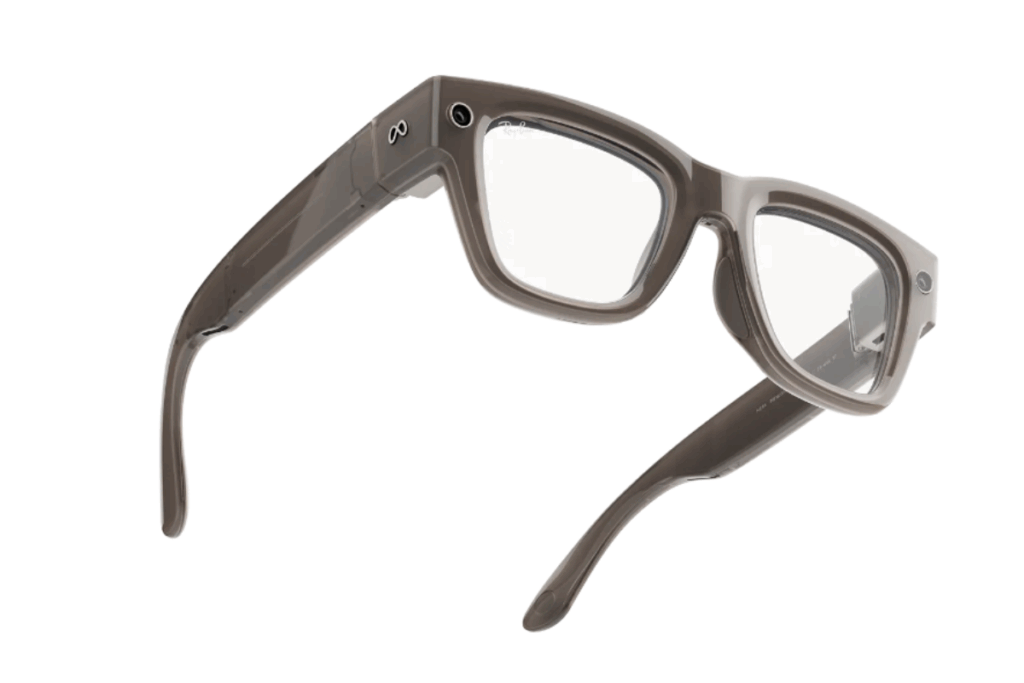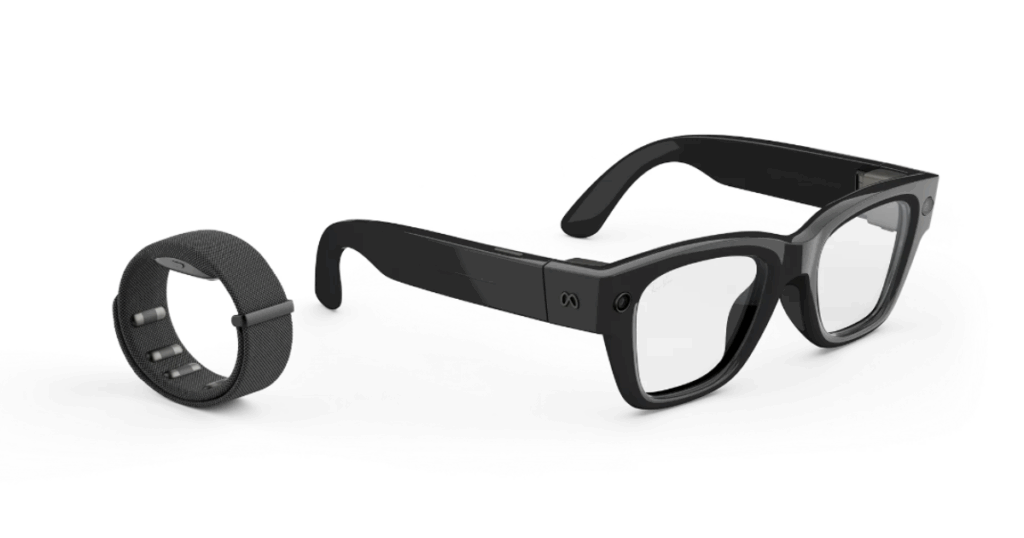A Paradigm Shift or a Premium Illusion?
At Meta Connect 2025, Mark Zuckerberg didn’t just unveil a product—he issued a challenge. The new Ray-Ban Display glasses, a sleek fusion of fashion and frontier tech, were introduced as the “ideal form factor for AI.” But it was his warning that truly stirred global debate: “People without smart glasses may face a cognitive disadvantage.”
This isn’t just marketing—it’s a manifesto. Meta is betting on a future where screens vanish, AI becomes ambient, and wearable interfaces become the new norm. In Silicon Valley, this vision resonates. But in Kenya, where mobile phones remain the backbone of communication, commerce, and creativity, the question is more layered: Can AI glasses truly serve the everyday Kenyan user—or are they another moonshot tailored for first-world convenience?
JuaTech Africa enters this debate not as a spectator—but as a shaper of narrative. We dig beneath the buzz, verify every claim, and weigh the implications for East Africa’s mobile-first reality. Because here, technology isn’t just innovation—it’s strategy, survival, and sovereignty.
What Meta’s AI Glasses Actually Offer

Meta’s Ray-Ban Display glasses aren’t just stylish—they’re a calculated leap into ambient computing. Priced at $799 (approx. KSh 117,000), they pack a suite of features designed to shift mobile interaction from handheld to head-mounted. But beyond the buzz, what do they actually offer—and how much of it matters to the Kenyan mobile user?
Verified Capabilities
Unveiled at Meta Connect 2025, the glasses feature:
- MicroLED Display in Lens: A 600×600 full-color screen embedded in the right lens, boasting 5,000 nits brightness and a 90Hz refresh rate—visible even under Nairobi’s midday sun.
- Neural Wristband (Meta Neural Band): Powered by surface electromyography (sEMG), it reads wrist muscle signals to enable touchless control—scrolling, clicking, even composing messages with subtle finger movements.
- Camera & Audio Suite: A 12MP ultra-wide lens captures 3K video at 30fps, with 3x zoom and an in-lens viewfinder. Audio is delivered via dual open-ear speakers and six beamforming microphones, optimized for ambient awareness.
- AI Integration: Meta AI delivers real-time translation, live captions, navigation, WhatsApp/Messenger video calls, and Spotify/Audible media display—all within your field of view.
- Battery & Connectivity:
- 6 hours of mixed use24 hours via charging case
- 32GB internal storage, 2GB RAM
- Wi-Fi 6, Bluetooth 5.3
- Prescription-ready lenses (Rx range: -4.00 to +4.00)
These specs are not theoretical—they’re live, tested, and shipping in select markets. Meta’s vision is clear: ambient computing is no longer a concept. It’s wearable.
Kenyan Realities: Usefulness Over Novelty
Specs alone don’t win hearts—or wallets—in Kenya. Here, mobile phones are more than tools. They’re lifelines for M-PESA, TikTok, WhatsApp, and work-from-anywhere hustle. The real question, then, is: Do these glasses actually solve real problems for Kenyan users?
- Outdoor Visibility: With 5,000 nits brightness, the display is readable in harsh equatorial sunlight—ideal for boda riders, hawkers, and commuters navigating Nairobi’s chaos.
- Touchless Control: In crowded spaces like Gikomba, matatus, or CBD, gesture-based input could be safer and more practical than pulling out a phone.
- Translation & Captions: Kenya’s multilingual reality—Swahili, English, Sheng, and tribal languages—makes real-time translation a powerful tool for classrooms, border towns, and pan-African creators.
- POV Content Creation: Influencers, vloggers, and journalists can capture authentic, hands-free footage from their perspective—no tripod, no phone, no friction.
Strategic Interpretation: Interface vs Infrastructure
Meta isn’t just selling glasses. They’re selling a new interface for cognition—where AI becomes ambient, proactive, and seamlessly integrated into your field of view. But in Kenya, the stakes are different.
- Affordability: At KSh 117K, the glasses cost more than most smartphones—and far more than the average monthly income.
- Durability: Can they survive a rainy walk in Ngong? A dusty ride to Kitengela? A jostle in a matatu?
- Cultural Fit: Would you wear smart glasses in a rural market? Would they be seen as applicable—or as a luxury?
For AI glasses to gain traction in Kenya, they must prove their utility, resilience, and cultural compatibility. Until then, they remain aspirational—powerful, yes, but peripheral.
Kenyan Realities: Infrastructure, Culture, and Cost

Mobile Money Isn’t Optional—It’s Foundational
In Kenya, the smartphone doesn’t sit in your pocket as a luxury—it powers your life. Over 56 million mobile lines connect people to money, markets, and each other. M-PESA alone moves more than KSh 2 trillion annually, fueling transactions from Rongai kiosks to Kisii school fees. Whether buying sukuma wiki, sending rent, or splitting fare, Kenyans rely on mobile money platforms like M-PESA, Airtel Money, and T-Kash to move fast, pay instantly, and stay financially afloat. Mobile isn’t just convenient—it’s the backbone of daily survival.
Meta’s AI glasses, however advanced, don’t yet support SIM-based mobile money or tap-to-pay functionality. Without native integration, they fail to deliver where it matters. In Kenya, financial inclusion runs on mobile rails—not wearables. If the glasses can’t transact, they can’t compete.
Data Is Still a Gatekeeper
Kenya’s smartphone penetration is impressive, but data affordability remains a bottleneck. According to the Communications Authority of Kenya, 1GB of mobile data costs between KSh 250 and KSh 350, depending on the provider. Many users stream cautiously—they ration data to stretch every shilling, especially when providers throttle speeds or bundle access.
AI glasses demand constant connectivity, cloud-based processing, and real-time responsiveness. Without subsidized data plans or offline capabilities, they risk excluding the very users they aim to empower. In a market where every megabyte counts, ambient AI must prove its worth in the bandwidth.
Wearables Face Cultural and Practical Barriers
Smartwatches and fitness bands have made modest inroads, but the adoption of wearable technology remains niche. Concerns around fragility, theft, and social perception persist. Would you wear KSh 117,000 glasses in a matatu? In Gikomba? On a boda? Even wearing those expensive gadgets in the CBD in broad daylight would cause a stir, and the interest of mobile thugs ready to get you by surprise by force.
In Kenya, tech lives in shared spaces—passed between siblings, repurposed by hustlers, pooled by communities. But AI glasses break that rhythm. They feel personal, premium, and—for now—impractical. They flash status, not solve problems. And here, utility wins. If a device can’t be shared, adapted, or stretched to fit real life, it stays on the shelf. Kenyans don’t chase tech for prestige. We adopt it when it works—when it earns its place in the hustle.
Interface Must Meet Infrastructure
Meta’s vision is bold. But Kenya’s reality is grounded. For AI glasses to thrive in this region, they must align with local infrastructure, economic realities, and cultural norms. Until then, they remain aspirational—powerful, yes, but peripheral.
JuaTech Africa believes the future of mobile won’t be defined by specs alone. It will be shaped by relevance, resilience, and radical usability.
Use Case Scenarios in Kenya
If AI glasses are to transition from novelty to necessity, they must demonstrate their value in the rhythm of Kenyan life. Not in sterile demos—but in the dust, hustle, and human moments that define our days. Here’s what that could look like.
Boda Rider in Pipeline, Navigating with Precision
It’s 7:30 AM. Duncan Onyango*, a boda rider in Pipeline, ready for the day, is threading through traffic toward South B. His phone is tucked away—not buzzing in his pocket, not mounted on a shaky handlebar. Instead, a discreet arrow floats in his lens, guiding him turn by turn. He nods at a junction, swerves past a stalled matatu, and arrives on time—no missed turns. No distractions. Just clarity—delivered in motion.
Ngong Creator, Filming Her World in POV
Naomi Naliaka*, a content creator in Ngong, straps on her Ray-Ban Display glasses and hits record with a subtle wrist gesture. Her audience sees what she sees—sunrise andsunset hikes, market scenes, candid interviewswith the people. No tripod, no phone. Just immersive, hands-free storytelling from her perspective. It’s raw, real, and ready for TikTok, YouTube, or Instagram.
Student in Eldoret, Breaking Language Barriers
In one of the elite schools in Eldoret, in a packed auditorium, a guest speaker on ‘Academic Excellence Beyond Borders’ from Arusha takes the stage and speaks fluent Swahili. The student, Christabel Cherono*, is more comfortable in English communications, watches captions appear in real-time, and they are translated accurately and unobtrusively. No hand-raising. No confusion. Just understanding—powered by ambient AI.
Businesswoman in Transit, Staying Connected
At 7:00 AM, on the matatu shuttle from Nakuru to Nairobi CBD, Caroline Mumbi*, a high-end smartphone importer and VC, sharply dressed for a 10:00 am meeting in the capital, receives a WhatsApp call. Her Meta AI glasses notify her discreetly. She taps her wrist, speaks through open-ear audio, and reviews a shared pitch deck—all without pulling out her phone. She’s present, connected, and productive—without compromising safety or flow.
These aren’t fantasies. They’re fragments of a possible future—if the tech meets the terrain. Kenya doesn’t need imported innovation. It needs contextual intelligence—tools that understand our pace, our pain points, and our potential.
JuaTech Africa believes the future of mobile must be lived, not just launched. And Kenya is ready to shape it—one use case at a time.
Global vs Local: Why Africa’s Path Will Be Different
In California, people frame AI glasses as lifestyle upgrades—tools for productivity, convenience, and digital flair. But in Kenya, tech must solve real problems. We don’t adopt innovation for novelty. We embrace it when it delivers—when it earns its place in the daily grind.
Naomi, the pro-creator in Ngong, doesn’t care about ambient AI as a concept. She cares whether it helps her shoot, edit, and post faster—without draining her data bundle. Essentially, it enables her to create unique content and build her profile. Onyango, the highly motivated boda boda rider in Pipeline, isn’t chasing futuristic interfaces. He’s chasing time, safety, and clarity on chaotic roads. Cristabel, the student in Eldoret, doesn’t need AI to impress. She needs it to translate, caption, and connect—without friction.
Africa’s tech adoption curve is shaped by utility, not hype. We leapfrog not because we’re trend-driven, but because we’re problem-driven. From mobile money to solar kits, every breakthrough here earns its place by addressing a pressing need.
That’s why JuaTech Africa emphasizes the importance of contextual intelligence. We don’t just review devices—we interrogate their relevance. We don’t just echo global launches—we translate them into local impact.
The future of mobile won’t be dictated by Silicon Valley alone. It will be co-authored by Nairobi, Lagos, Kigali, and beyond—where innovation meets infrastructure, and ambition meets reality. Building narratives and driving home this point is of utmost importance.
Strategic Verdict | Meta AI Glasses in Kenya
AI glasses won’t replace smartphones—not yet. But they’re quietly rewriting the rules of mobile interaction. From touch to gesture, from screen to lens, from reactive to ambient—Meta’s Ray-Ban Display glasses signal a shift in how we engage with information, people, and the world around us.
Kenya approaches a pivotal moment. We’ve already leapfrogged landlines, skipped banking halls, and ditched desktop dependency. Now, we’re poised to leap again—from mobile-first to ambient-first. But this next jump demands more than hype. It calls for relevance, resilience, and radical usability—technology that earns its place by solving real problems, not just showcasing futuristic flair.
Global launches won’t define the future of mobile. Real impact will come from how well these technologies serve everyday Kenyans—boda riders dodging traffic jam, creators filming raw POV content, students decoding lectures in different language, and entrepreneurs closing deals remotely. These aren’t edge cases. They’re the heartbeat of our digital economy. If AI glasses can’t adapt to this rhythm, they’ll remain peripheral. But if they do, they’ll unlock a new era of mobile interaction—built not just for Kenya, but by Kenya.
JuaTech Africa believes this is our moment—not just to adopt innovation, but to define it. We must shape this future—not just consume it. That means demanding contextual intelligence, building local ecosystems, and telling our own tech stories with clarity and conviction.
The glasses may be smart. But the future will belong to those who make technology make sense—locally, practically, and powerfully.
Closing CTA: Join the Debate
Would you wear Meta AI glasses in Kenya in your daily life—from Ngong to Nairobi, in matatus, markets, or meetings? What would they need to offer to truly replace your phone—M-PESA integration, offline functionality, rugged design, or localized AI?
This isn’t just a tech trend. It’s a turning point. And your voice matters.
JuaTech Africa is listening. We’re building a community of thinkers, creators, and everyday users who want more than hype—they want relevance. Share your thoughts, challenge the assumptions, and help shape the future of mobile interaction in Kenya and beyond.


















I`ve been desiring to have an A.I video cam glasses.I got duped having paid 4k and got a bluetooth glass insted.I kept digging for info how i can either import an A.I enabled cam glass or buy one locally.However i got lucky after two false orders one of which i returned and waited to be refunded a whole month(china seriously?) Am talking about Cyan Ai glasses.They boast 12mp camera ,honestly ive tried em i can share the few videos ive taken with them ..i intend to do P.O.V content .For the META A.I glasses they`re the epitome of A.I enabled glasses i would one day get money to buy one ..for now lettme take videos incognito using cyan A.I from again China!!!!
Take time before getting the AI Glasses. Meta glasses, partnering with Ray Ban have proved quite useful. Do not go for the cheapest option. If you want a good deal, reach me on 0714710460. We can arrange for direct importation or get your quality, genuine pair.
Share your experience with us. If in Nairobi, can we collaborate with an exclusive review?